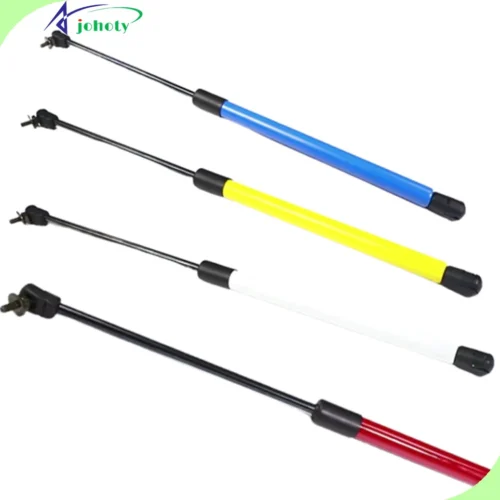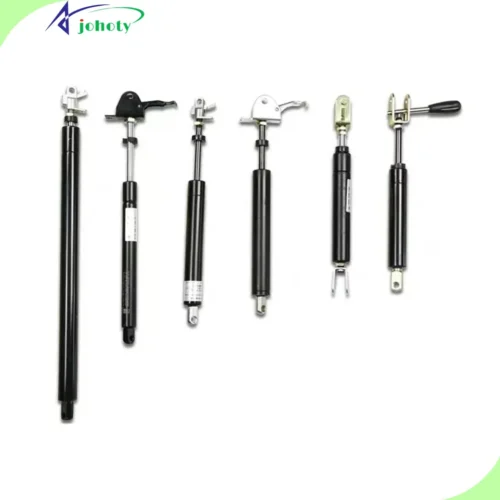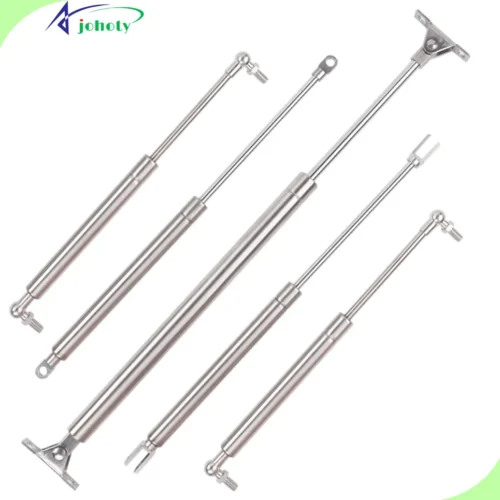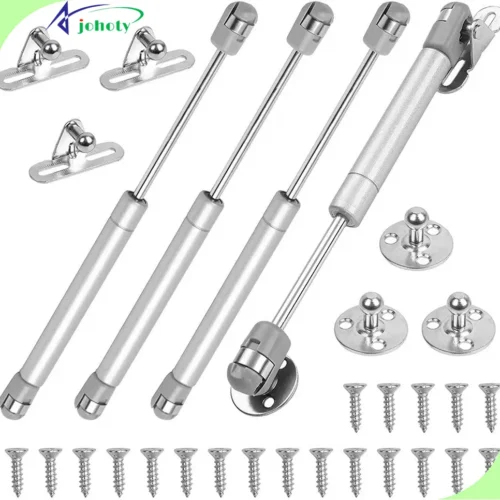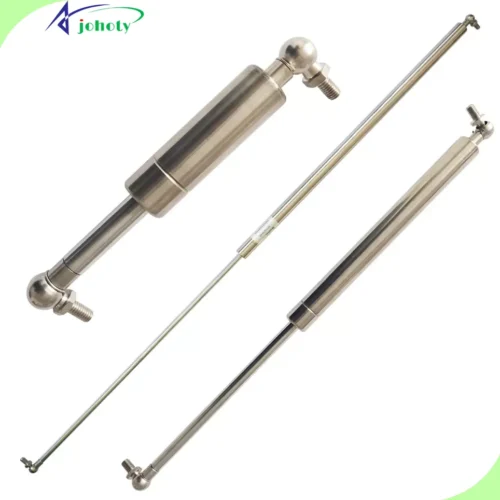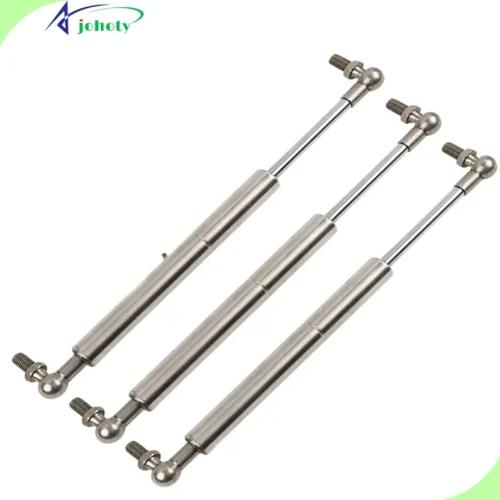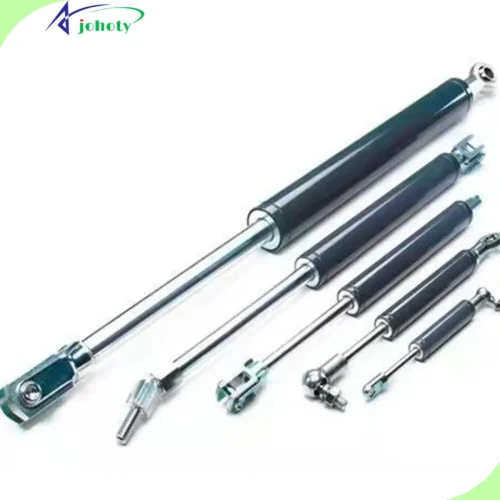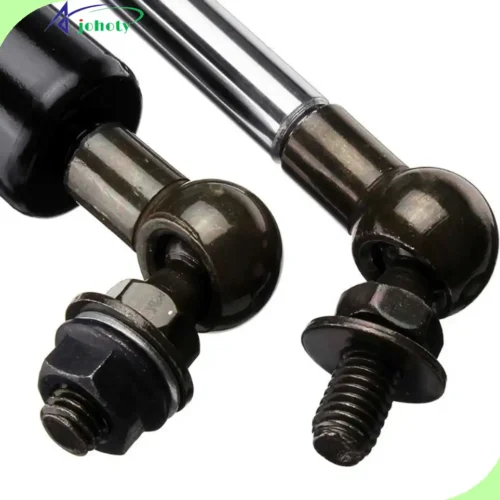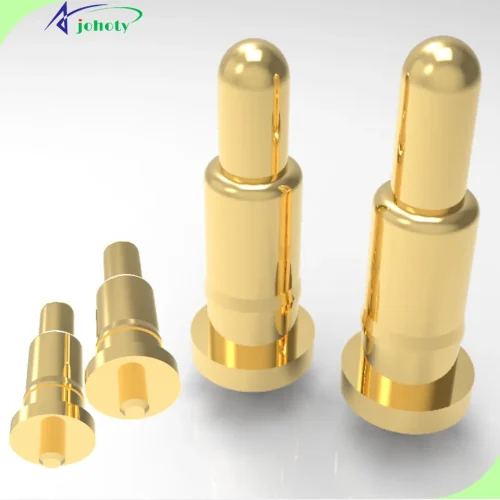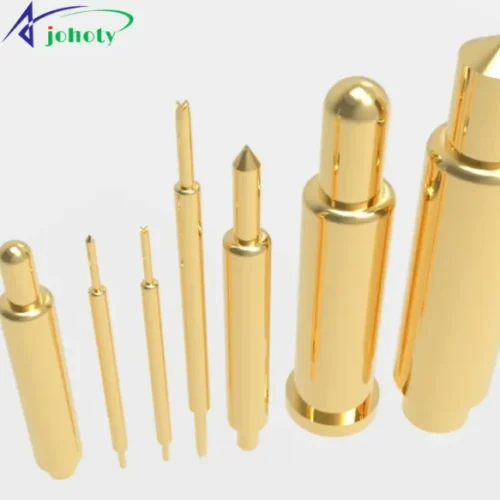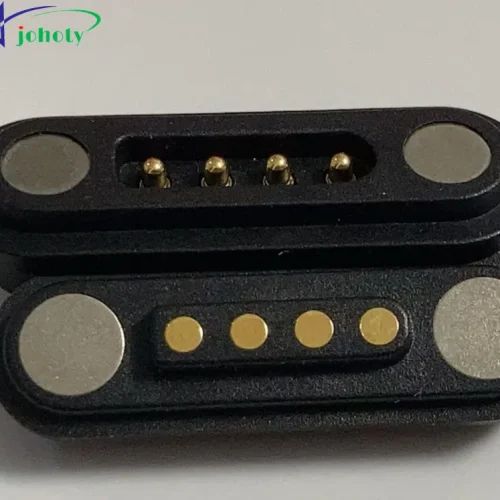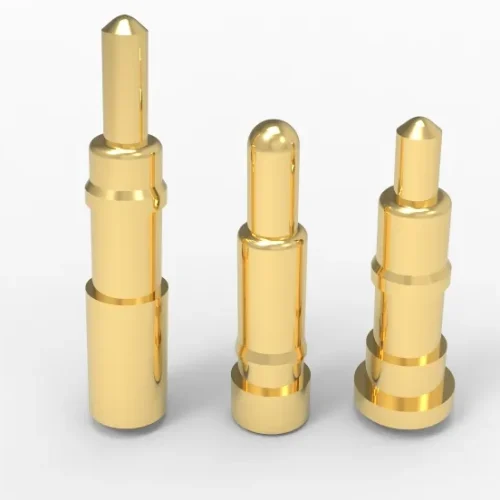How to Install Gas Struts, Select the right gas struts, essential prep work, and precise installation steps. Plus, professional tips to steer clear of common installation pitfalls, ensuring efficiency and safety. Whether you’re an engineer, maintenance specialist, or project manager. This article delivers invaluable insights and practical guidance for you.
How to Install Gas Struts, Gas struts utilize compressed gas to perform work, consisting of a sealed cylinder, a piston, and a rod attached to one end of the piston. Operating on the principle of nitrogen gas, when force is applied, the gas compresses; upon force removal, the gas expands, pushing the rod back to its original position.
Widely employed in automobiles, furniture, industrial machinery, and medical equipment. Gas struts primarily control the motion of components requiring slow, controlled movement. Such as mechanical arms, lids, or any switch motion.
Compared to traditional mechanical springs, gas struts offer smoother, more controllable motion. It enables fine-tuning of both speed and position with pinpoint accuracy. Installation is a breeze, maintenance is a cinch, and they’re built to last.
Proper selection and installation of gas struts are crucial for ensuring equipment performance and safety. Factors such as force, stroke length, and installation position must be considered. To ensure a perfect match with the application’s requirements.
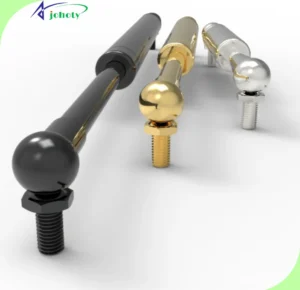
Introduction: How to Install Gas Struts?
Whether streamlining mechanical operations on the production line or enhancing product user experiences, gas struts play a vital role. Properly installing gas struts not only boosts mechanical efficiency but also ensures equipment operates safely. Here’s a detailed guide covering all the essentials on correctly installing gas struts. Ensuring your equipment strikes the best balance between efficiency and safety.
As market demands shift, selecting and installing gas struts has become a fundamental skill for many industry engineers and technicians. From effortlessly opening car trunks to precise control of medical equipment, the application scope of gas struts continues to expand. Therefore, mastering these skills improves operational efficiency and directly impacts workplace safety standards.
Through detailed steps, practical tips, and clear instructions, this blog ensures you can correctly install gas struts in any situation. Whether you’re a first-time installer or looking to further refine existing skills, the content here will provide significant assistance.
How to Choose the Right Gas Struts?
Determine Load Requirements:
- Force: Firstly, understand the force the gas struts need to support or resist, usually measured in Newtons (N) or pounds (lb). Considering safety factors, choose gas struts with slightly higher force than actual needs.
- Stroke Length: The stroke distance equals the full extension of the gas struts from its fully compressed to fully expanded state. Ensure the selected gas struts’ stroke length matches application requirements.
Consider Working Environment:
- Gas struts may perform differently in various environments, considering factors like temperature, humidity, and potential corrosion.
- For specific environments such as chemical exposure or high temperature, choose specially designed gas struts to ensure durability and performance.
Installation Configuration:
- Installation Position: Understand the gas struts’ installation position and orientation. As this may affect the required gas strut type, e.g., linear or bent.
- Connectors: Choose appropriate connectors to ensure gas struts can be correctly and safely installed on the equipment. Such as ball joint connectors, eye ends, or fork heads.
Brand and Quality Certification:
- Choose reputable brands and products with quality certification, such as Johoty Gas Struts, to ensure reliability and safety.
- Review product test reports and user reviews to assess performance and quality.
Tools, Materials, and Safety Preparation: How to Install Gas Struts?
Basic Tools:
- Wrenches and socket wrenches: For tightening and loosening bolts and nuts.
- Screwdriver: For adjusting and securing connectors.
- Pliers and scissors: For handling and adjusting wires or other small components connected to gas struts.
- Ruler or tape measure: For measuring and calibrating installation positions.
Specialized Tools:
- Torque wrench: Guarantees nuts and bolts are tightened with the precise torque, avoiding both over-tightening and not tightening enough.
- Pneumatic tools: If necessary, to expedite the installation process, especially in large-scale production or repetitive installations.
- Installation Materials:
- Suitable gas struts: Choose the correct model and specifications based on the selected gas strut components.
- Installation fixtures and connectors: Such as bolts, nuts, washers, and other necessary fasteners.
Safety Equipment:
- Work gloves: Protect hands from cuts and abrasions.
- Safety goggles: Prevent small particles that may splash during installation from injuring the eyes.
Safety Preparations:
- Understand the installation environment: Double-check that the installation zone is tidy, dry, and sufficiently illuminated. Take away any items that may cause individuals to trip or stumble or other safety hazards.
- Check tools and materials: Before use, verify that all materials and tools are in top-notch shape. Ensuring they are not damaged or worn, which could affect operational safety.
- Read the operating manual: Before starting the installation, thoroughly read and follow our provided installation guide and safety warnings.
- Use proper posture: When installing, adopt the right posture and steer clear of long periods of repetitive movements. Take regular breaks to reduce the risk of occupational hazards.
Installation Steps: How to Install Gas Struts?
1. Preparation Stage
Confirm Gas Strut Specifications:
- Ensure the selected gas struts match the equipment’s force requirements and size specifications.
Gather Tools and Materials:
- Prepare necessary tools including torque wrenches, wrenches, screwdrivers, and more.
- Ensure all installation accessories, screws, nuts, brackets, etc., are in good condition.
Safety Measures:
- Put on the appropriate safety attire, including work gloves, work shoes, work clothes, and protective eyewear.
2. Installation Steps
Disassemble Old Gas Struts:
- Carefully disassemble the old gas struts using suitable tools. Noting the original position and direction of each component for proper installation of the new gas struts.
Measure and Mark Installation Points:
- Measure and mark the installation points for the new gas struts. Ensure precise markings to avoid improper installation leading to malfunction or damage.
Install Mounting Brackets:
- Fix the brackets securely in the specified spots as per our instructions. Employ a torque wrench to guarantee that screws and nuts are fastened to the precise torque specification. Preventing both over-tightening and under-tightening.
Install Gas Struts:
- Connect one end of the gas struts, usually the end with the rod, to the moving part, and the other end to the fixed bracket.
- Ensure connectors are properly aligned to prevent twisting or overstretching of the gas struts during use.
Inspect and Adjust:
- After installing the gas struts, check their range of motion and smoothness during actual operation. Ensure the gas struts do not interfere with or collide with other components.
- Adjust installation angles or positions to optimize the performance and lifespan of the gas struts.
Functional Testing:
- It ensures the gas struts operate normally and meets expected performance standards. Check if the opening and closing mechanisms are smooth and if the gas struts provide proper support force.
3. Completion of Installation
Final Inspection:
- Conduct a final inspection of the installed gas struts. It is to ensure all screws and connectors are securely fastened, and the gas struts function properly.
- Ensure the installation area is tidy, and tools and excess materials are properly stored.
Maintenance Tips:
- Provide maintenance and inspection tips for gas struts to prolong their lifespan and maintain optimal performance.
Testing and Validation: How to Install Gas Struts?
1. Visual Inspection
- Integrity Check: Ensure the gas struts and all connectors are free from obvious damage or defects, including cracks, rust, or abnormal wear.
- Installation Confirmation: Check if the gas struts are correctly installed according to our specifications, including the correct orientation and position.
- Fastener Inspection: Ensure all screws, nuts, and other fasteners are securely tightened without any looseness.
2. Operational Testing
- Movement Test: Manually operate or use mechanical equipment to test the opening and closing movement of the gas struts. Ensuring smooth and unobstructed action.
- Force Test: Check if the gas struts provide sufficient support force and damping force, meeting technical specifications. This may require specialized force measurement equipment for accurate measurement.
- Continuous Operation: Conduct continuous movement tests to simulate frequent operations in actual use, observing for any performance degradation or abnormal wear.
3. Load Testing
- Static Load: Apply continuous load on the gas struts and check if they can maintain stable support without sinking or compression failure.
- Dynamic Load: Simulate dynamic loads in actual use to verify the response and stability of the gas struts under varying loads.
4. Environmental Testing
- Temperature Adaptability: Test the gas struts under different temperatures to ensure they work normally within the expected operating temperature range.
- Corrosion Testing: If there is a risk of corrosion in the application environment Conduct corrosion testing to check the corrosion resistance of materials and coatings.
5. Safety Function Check
- Overload Protection: Test the overload protection function of the gas struts. It ensures they can operate safely or interrupt according to design under overload conditions.
- Emergency Release: For applications requiring quick release or emergency stop, test these safety functions to ensure reliable execution.
6. Final Verification
- Overall Assessment: After completing all specific tests, conduct a final comprehensive performance assessment. To ensure the gas struts meet all operational and safety standards.
- Documentation: Document all test results and identified issues, including any items that need further attention.
Common Issues and Troubleshooting: How to Install Gas Struts?
1. Gas Struts Not Providing Sufficient Support
After installation, gas struts seem unable to bear the expected load. Making it difficult to open doors or lids, or they fail to stay open.
- Check Specifications: Confirm if the selected gas struts’ force and size meet equipment requirements. If insufficient, consider replacing them with higher-spec gas struts.
- Check Installation Angle: Incorrect installation angle may affect gas struts’ performance. Adjust the installation position or angle for better support.
2. Gas Struts Movement Not Smooth
Gas struts feel jerky or inconsistent during operation.
- Check if the gas struts’ piston rod needs lubrication. Proper lubrication can improve movement smoothness.
- Check for Damage: Inspect gas struts for visible damage or deformation, which may cause rough movement. Replace gas struts if necessary.
3. Gas Struts Leaking
Oil stains or gas leaks from the sealing part of the gas struts.
- Check Seals: Inspect if the gas struts’ seals are intact. Poor sealing is a common cause of leaks.
- Replace Gas Struts: If leakage is severe, consider replacing them with new gas struts as internal damage may be irreparable.
4. Gas Struts Noise Issues
Unusual noises occur during gas strut operation.
- Check Fixtures: Ensure all screws and brackets connecting the gas struts are tight and secure. Loose parts may generate noise during movement.
- Lubricate Joints: Applying a suitable amount of lubricant at gas strut joints can reduce noise.
5. Difficult Installation
Encountering difficulties in securing or positioning gas struts during installation.
- Use Proper Tools: Ensure correct tools are used for installation to improve accuracy and efficiency.
- Follow Installation Guidelines: Carefully read and follow our installation instructions. Correct steps and techniques can prevent common errors during installation.
6. Gas Struts Unable to Open or Close Properly
Gas struts installed but unable to smoothly open or close doors, lids, or windows.
- Check Installation Angle: Incorrect installation angle may cause operational difficulties. Ensure gas struts are correctly installed as per our guidance.
- Check Gas Struts Specifications: Ensure selected gas struts’ load-bearing capacity matches application requirements. Insufficient or excessive force may cause operational issues.
7. Gas Struts Rapid Failure After Installation
Newly installed gas struts fail or experience significant performance degradation shortly after installation.
- Recheck Specifications: Confirm gas strut specifications used fully suit application requirements. Overloading is a common cause of rapid failure.
- Installation Inspection: Recheck every step of the installation process to ensure no installation errors causing premature gas strut damage.
8. Gas Struts Fixtures Loosening Over Time
Gas strut fixtures begin to loosen after some time in use.
- Tighten Fixtures: Regularly inspect and tighten all screws and nuts. Use appropriate torque to prevent over-tightening or loosening.
- Use Thread Locker: Apply a suitable amount of thread locker on screw threads to prevent loosening due to vibration.
Maintenance: How to Install Gas Struts?
Regular Inspection
- Visual Inspection: Comprehensive visual inspection of the gas struts regularly, such as every three months. Check for signs of rust, damage, or leaks, especially around the sealing area and piston rod.
- Operational Check: Test the functionality of the gas struts to ensure smooth operation and no abnormal sounds. Verify if the gas struts can support the designated load without sinking.
Cleaning and Lubrication
- Cleaning: Use a clean cloth and non-corrosive cleaner to regularly clean the exterior of the gas struts. Avoid using corrosive chemicals that can damage metal or seals.
- Lubrication: The piston rod of the gas struts needs to be well lubricated to reduce wear and prevent corrosion. Use appropriate lubricants such as silicone oil or the recommended lubricant to lubricate the piston rod and sealing components.
- Adjust the lubrication frequency based on usage and environmental conditions, typically lubricating every six months to a year.
Rust Prevention
- Anti-Rust Treatment: Gas struts used in humid or salty environments should undergo additional rust prevention treatment. Anti-rust coatings or regular application of anti-rust sprays can protect metal parts.
Environmental Control
- Environmental Factors: Avoid exposing the gas struts to extreme temperatures and chemical corrosive substances as much as possible. High temperatures can accelerate seal aging, while certain chemicals can corrode metal and damage seals.
Replacement of Parts
- Replace Damaged Parts: If damaged or excessively worn seals, piston rods, or end fittings are found during inspection, they should be replaced immediately. Use our parts to maintain the performance and safety of the gas struts.
Record Keeping and Feedback
- Maintenance Records: Maintain detailed maintenance and inspection records, including the date of each inspection, identified issues, and actions taken. This helps track the health status of the gas struts and predict future maintenance needs.
- User Feedback: Pay attention to feedback from operators regarding the performance of the gas struts, such as operational difficulties or other anomalies. This information can serve as a valuable reference for maintenance checks.
Conclusion: How to Install Gas Struts?
- Installing gas struts is a crucial step in enhancing equipment efficiency and safety. By correctly installing and regularly maintaining gas struts, you can ensure their long-term stable operation, providing reliable support and damping effects.
- Choosing the right specifications and models of gas struts for application needs is crucial It can ensure they can withstand the expected loads and provide ideal motion control. Following our installation guide and maintenance recommendations is key to ensuring gas struts work properly.
- Regular inspection, cleaning, and lubrication of gas struts are important steps to maintain their optimal performance and extend their lifespan.

